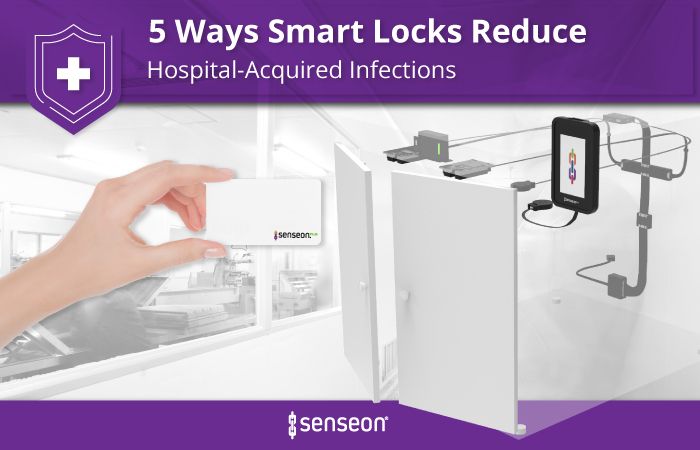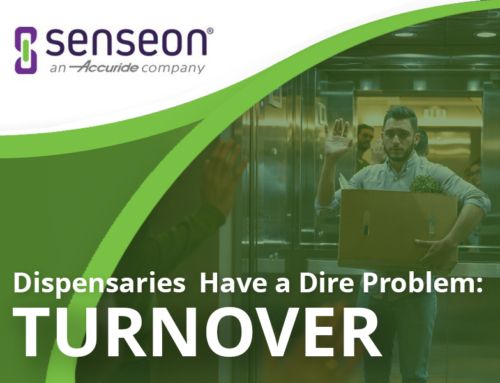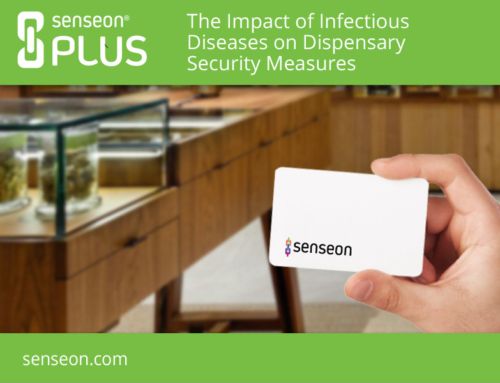Hospitals face a major challenge when treating sick hospitalized patients carrying infectious diseases: How can doctors, nurses, and other medical staff deliver treatment without spreading the illness themselves?
Hospital-acquired infections are just one type of healthcare-associated infection (HAI) that can take place while patients receive treatment at a healthcare facility. Other places of acquisition might include ambulatory surgical centers or long-term care facilities like nursing homes.
In fact, the Centers for Disease Control and Prevention estimates that 1 in 31 hospital patients have an HAI.
The Cabinet Problem
In many ways, the necessity of human contact enables HAIs to take place. Both bacterial and viral agents like staphylococcus aureus (staph) and severe acute respiratory syndrome coronavirus-2 (SARS-CoV-2) can spread through contact with contaminated surfaces.
When a patient or healthcare worker comes into contact with one of these surfaces, the infection spreads. This can have deadly consequences, especially since many HAIs may carry some form of antibiotic resistance — methicillin-resistant staphylococcus aureus (MRSA) being a great example — or have no cure like COVID-19.
At the same time, healthcare workers need to interact with cabinets and medical storage in order to access medicines and files. Constant and repeated contact with these surfaces can make it difficult for healthcare workers to sterilize these touchpoints despite proper hand hygiene and disinfection policies.
Some healthcare providers are bringing new technology into their healthcare setting in an attempt to improve security and lower infection rates.
Here are a few ways that smarter cabinet and locking mechanisms can help medical teams reduce the risk of hospital-acquired infections.
1. Create Fewer Overall Touch Points
One of the most obvious ways to reduce nosocomial infections spread through surface interaction is to reduce the number of overall touchpoints that hospital workers need to clean and disinfect.
Experts agree that keeping hospitals clean is critical to patient and staff safety, especially when hospital infections can spread to critical areas like the ICU or surgical operating theatres. Critical care patients with compromised immune systems or other notable risk factors may not be able to survive an attack from a bacterium with antimicrobial resistance like clostridium difficile (C. difficile).
One way to boost cleanliness is to reduce the number of cabinets or storage units within healthcare settings. By consolidating critical medicines behind a smarter access control solution, hospital administrators can protect necessary supplies and reduce the number of surfaces that individuals need to touch in order to reach essential medicines and stock.
If fewer touchpoints need to be cleaned, monitored, or maintained, hospital workers practice infection prevention by limiting the places where the virus could potentially transfer. This leads to tighter control and more limited exposure to HAI-related illnesses.
2. Reduce Specific Multi-Person Contact Surfaces
Traditional locks and cabinets within a healthcare facility are made up of multiple physical components. Workers need to handle a lock and a key or enter an access code into a keypad in order to access their medicines and tools.
Every point of contact made while gathering life-saving equipment is a potential point of exposure to a virus or bacteria.
This exposure can lead to unnecessary — and potentially deadly — consequences for patients during their hospital stay. This could include exposure to deadly viruses like COVID-19 or preventable central-line associated bloodstream infections (CLABSI) and catheter-associated urinary tract infections (CAUTI).
With a smart locking solution like Senseon’s systems, medical staff members no longer need to handle a key or a physical lock. They can simply use an RFID card, wristband, or badge-affixed tag to disengage a lock.
Using this system, hospital administrators can issue a single card that is authorized at multiple locks, thereby reducing the need to carry excess keys or equipment.
If cards are distributed to all relevant staff members, everyone has their own key and there is no reason for cards to change hands. Additionally, administrators can use tools like Senseon Plus to monitor access and create audit trails to better understand how cabinets are being accessed throughout the day.

Senseon Plus combines Senseon’s robust locks with powerful software to provide an intelligent security solution for cabinet doors and drawers.
3. Better Security and Lower Visibility
In the midst of the COVID-19 pandemic, many hospitals and clinics have seen a breakdown in hospital security and access control. The shortage of Personal Protective Equipment (PPE), N95 masks and surgical masks created resource scarcity that has left some healthcare facilities unprepared. This has led to the theft of masks, sanitizer, and other PPE by numerous bad actors.
An electronic locking solution can be used to combat these issues by limiting the visibility of the mechanisms that keep essential equipment secure.
A keyed lock that has been mounted into a cabinet door is visible and exposed. It can be tampered with from the outside, and thieves can visibly see where valuables are likely to be stored.
Electronic locks, like Senseon, are typically placed inside a cabinet drawer and can only be accessed with the pre-programmed RFID card. Because the locking mechanism is concealed, it creates a low profile that can be used to keep essential equipment and supplies safe and out of sight.
4. Reduce Exposure to Disease with Two-Way Cabinets
Hospital-acquired infections can be costly and difficult to treat. Infection within intensive care units and surgical theatres can pose a significant threat to at-risk and immunosuppressed patients.
In places where the risk of exposure is particularly dangerous, hospitals may be able to reduce the HAI infection rate through the clever use of a two-way sliding drawer. Using an e-lock and card, nurses or vendors could place medicines and equipment into the drawer from one end for retrieval on the other end.
This can help limit the spread of infectious diseases by reducing exposure between patients and staff members. Fewer staff members entering high-risk areas or interacting with highly-infectious patients reduces the risk of exposure to either party and protect the healthcare system as a whole.
5. Fewer Components to Clean
Reducing the number of components that hospital workers need to clean and maintain can also reduce the possibility of contact transfer in daily operations through increased efficiency.
Because e-locking solutions are mounted inside a drawer or cabinet, they are not exposed to handling by staff members who need to access the contents within.
With Senseon, all RFID cards are water-resistant and can be wiped down in seconds. If staff members no longer need to wash keys, scrub locks, or disinfect as many door handles or cabinet shelves, they can clean an area more rapidly and even return to it much sooner.
Reduce HAIs with Smarter Security
Without a doubt, following CDC guidelines around handwashing and sanitation is critical to infection control.
Smart locks are not a replacement for existing best practices, but they can supplement them. Today, even if every hospital in the United States followed all implemented guidelines, patients could still be exposed to deadly diseases simply by visiting their healthcare facility.
Take the next step in reducing hospital-acquired infections with smart locks from Senseon. Our staff can help you build a customized solution for any healthcare setting. Get in touch to learn more.






